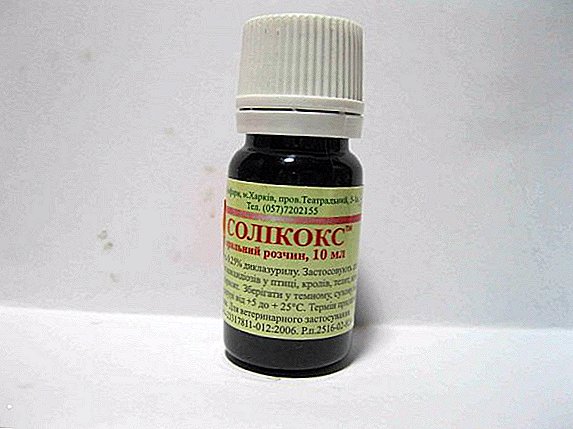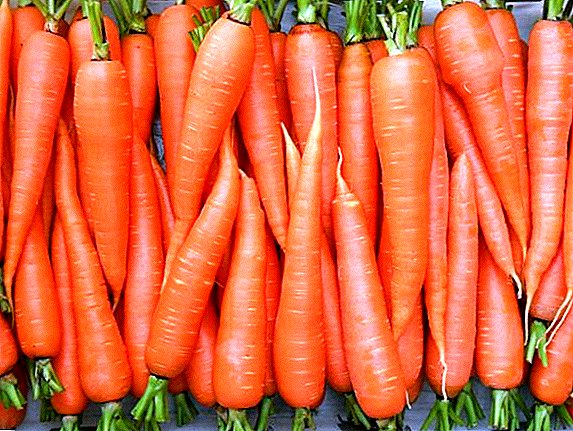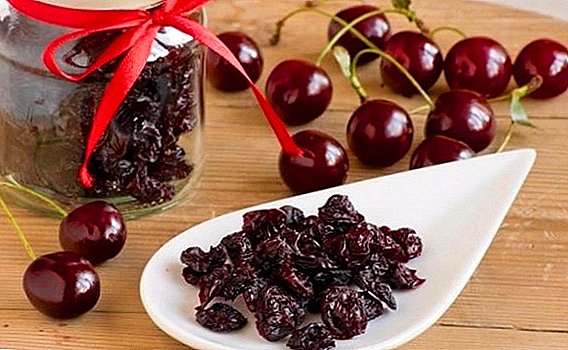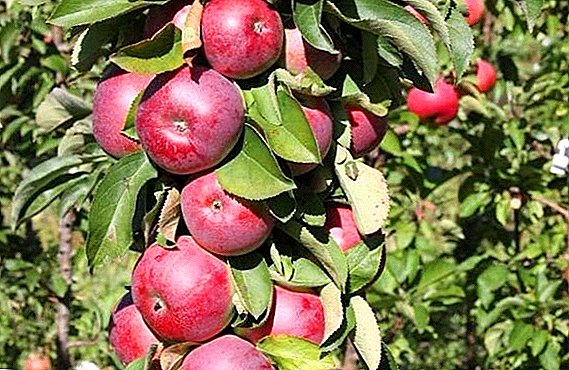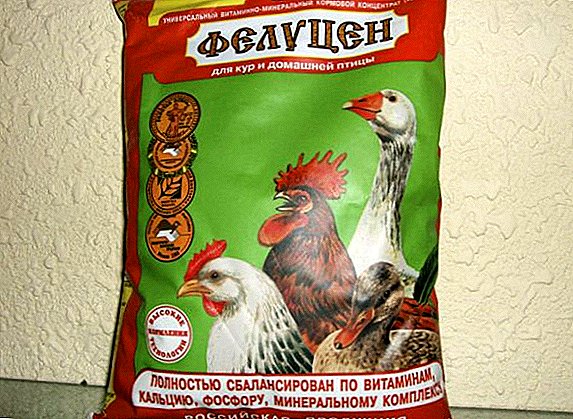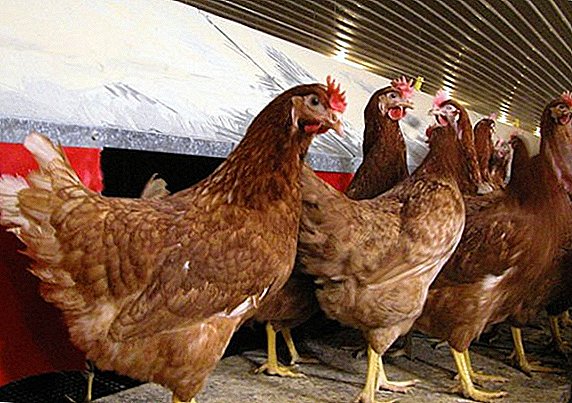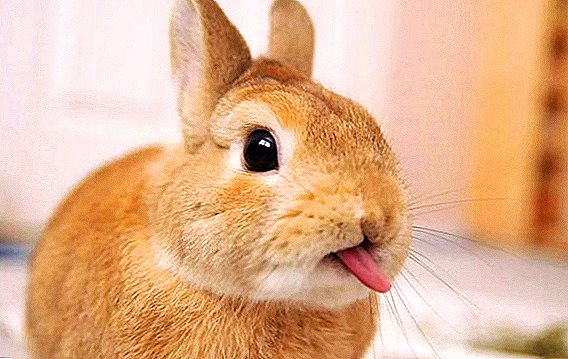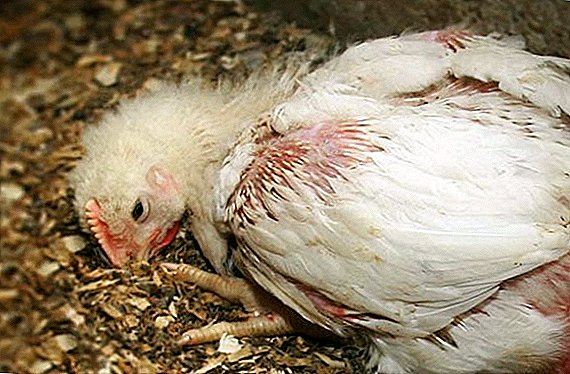 Every year, chickens suffer from a large number of diseases that cause huge losses to farmers. One of the most common diseases is coccidiosis. In our article we will talk about what constitutes this ailment, about its symptoms and methods of treatment.
Every year, chickens suffer from a large number of diseases that cause huge losses to farmers. One of the most common diseases is coccidiosis. In our article we will talk about what constitutes this ailment, about its symptoms and methods of treatment.
What is this disease
Coccidiosis - one of the parasitic diseases, which cause the simplest single-celled organisms - Eimeria. The area of their reproduction is the intestine, while the integrity of the mucous membranes is disturbed, the inflammatory process begins and intestinal bleeding begins. Due to the fact that mechanical damage to the mucous membranes occurs and immunity is significantly reduced, the illness can provoke the appearance of bacterial infections such as colibacillosis, salmonellosis and clostridiosis.
Important! During treatment, the feed with the drug should be given only once during the day, and the next day you need to prepare a new mixture.
Absolutely all animals are susceptible to coccidiosis. However, the feature of parasites is that they can parasitize exclusively on one species. For example, coccidia, which are the causative agents of the disease in chickens, are not capable of breeding geese and quails in the intestines. Due to the fact that a large amount of time the habitat of the parasite is the external environment, it has resistance to many negative influences, and it is very difficult to get rid of it.  Coccidia are distinguished by good fertility - in about 7-10 days, about 2 million descendants are produced by a single cell.
Coccidia are distinguished by good fertility - in about 7-10 days, about 2 million descendants are produced by a single cell.
Causes
The main sources of infection include:
- feed;
- drinking bowl;
- feeding trough;
- bedding.
We recommend to learn how to make a drinking bowl and a feeder for chickens with your own hands.
In contaminated food, the bacteria multiply easily, and in this way it can quickly enter the bird's body. This is the path of penetration of bacteria occurs most often. When free-range birds come along, they usually eat directly from the ground. Thus, there is a slight penetration of microorganisms into the stomach, where their further reproduction takes place.
However, everything can become complicated if the pack lives in one cage and, accordingly, eats from the same feeder. In this situation, most often we will talk about mass diseases, which are quite difficult to overcome. By the same principle, the disease spreads through the water.
Laying as a source of bacteria can be considered if infected chickens left their litter on it. Lack of timely harvesting, as well as rare replacements of hay, allow bacteria to quickly spread to other layers.
Learn how dangerous and how to treat diseases of chickens such as colibacillosis, pasteurellosis, Newcastle disease.
The first symptoms and course of the disease
There are two forms of the disease: acute and subacute.
In the acute course of the disease, the following symptoms are observed:
- the depression of the bird;
- poor appetite;
- constant thirst;
- ruffled feathers;
- the bird staggers when walking;
- the presence of diarrhea with elements of mucus, there may be orange or red inclusions.
Poultry owners often face problems like diarrhea and worms in chickens. Find out what causes and methods of treatment of these ailments.
 With coccidiosis, the chicken becomes lethargic, skin blueness is possible. The disease is accompanied by loss of bird weight, decrease in productivity. Typically, broilers can not reach the required weight, are indifferent to other, better feed, do not respond to stimulation with the use of vitamins and other additives.
With coccidiosis, the chicken becomes lethargic, skin blueness is possible. The disease is accompanied by loss of bird weight, decrease in productivity. Typically, broilers can not reach the required weight, are indifferent to other, better feed, do not respond to stimulation with the use of vitamins and other additives.
Did you know? Young chickens usually carry small eggs, and old ones carry large ones. Therefore, the statement that small eggs are worse is a delusion. On the contrary, they contain more nutrients.
Diagnostics
For diagnosis based on clinical signs, data of autopsy, as well as studies of litter and scrapings from the intestinal mucosa using a microscope. If single oocysts were found in the field of view, this does not give grounds for making such a diagnosis, since the presence of a small amount of eimeria in the intestines of the bird will be constantly noted.
If there are doubts about the presence of feathery coccidiosis, it is necessary at the first signs to consult a veterinarian.
How to treat coccidiosis in chickens
There are several ways to combat the disease: with the help of special preparations and traditional methods. Consider each one of them.
Find out what diseases adult chickens and chickens are ill with, how to diagnose and treat them.
Veterinary drugs
For therapeutic purposes, the use of coccidiostatic drugs that suppress the development of parasites is common. We offer you a list of drugs and the recommended dosage.
- "Amprolium". The therapeutic dose is 0.25 g per 1 kg of feed for 5-7 days. In order to prevent the dose is 125 mg per 1 kg of food. Chicks are given from birth to 17 weeks.
- Baycox. Apply in diluted form. The dosage is 1 ml of 2.5% drug per 1 liter of water. This volume of fluid must be boiled out within 2 days. For the purpose of prophylaxis, it is necessary to dilute 0.5 ml of a 2.5% preparation in 1 l of water and water the bird once a day.
- "Sulfadimezin". Give a sick bird at the rate of 1 mg per 1 kg of food. The course of treatment is 3 days. For prevention do not use.
- "Koktsidiovit". In order to prevent 1.25 g of the drug must be mixed with 1 kg of food, and the therapeutic dose is 2.5 g. The course of treatment is 7 days.
- "Avatek 15% SS". Mixed with feed at the rate of 5 g per 10 kg of food. It is recommended to give the medicine from the moment of birth of the bird and stop it 5 days before its slaughter.

Important! In dark and wet conditions, the likelihood of developing the disease increases, so you should ensure that the hen house is always dry and not too hot.
Folk remedies
We offer to get acquainted with some popular ways of dealing with the disease.
- The use of iodine. Iodine in the form of a solution is recommended to give before the morning meal. To do this, it should be diluted in water at a concentration of 0.01%. Dosage from birth to 40 days is 2 ml per bird, 40-60th day - 5 ml.
- Use of sulfur. To the daily feed rate, add 2% sulfur. Feeding is carried out for a maximum of 2 weeks; if the specified period is exceeded, rickets may occur.
- Using Osarola. The drug is dissolved in the feed and given to chickens according to the calculation: 10 g per 1 kg of bird weight. The resulting dose is divided into 2 times and give throughout the day. The therapeutic course is 5 days. After that, you need to take a break for 3 days and repeat the course 4 times.

An important aspect of maintaining the health of chickens is the proper diet of poultry.
Preventive measures
In order to protect the bird from coccidiosis, you should follow these guidelines:
- Twice a week it is necessary to clean the drinkers, feed tanks, bedding, walls and the floor of the chicken coop;
- after each feeding it is necessary to remove food from the feeder;
- once a week it is worth cleaning the territory for walking;
- it is important to resettle the bird of different ages, as it is characterized by the presence of different immunities;
- choose food with a high percentage of vitamins and minerals to ensure the formation and maintenance of the immunity of birds;
- place a container in the hen house in which there will be gravel, shell rock, chalk and salt.
- Timely vaccinate the bird, perform its vaccination on the recommendation of a veterinarian.
Did you know? A chicken will never lay an egg in the dark. Even if it is already time for laying, she will be waiting for the dawn or the inclusion of artificial lighting.Coccidiosis is a very dangerous disease, and everything must be done to prevent its penetration into the chicken coop. Remember that by following tips on how to prevent ailment, you can avoid the death of birds.
Video: how to treat coccidiosis in chickens
Treatment reviews



